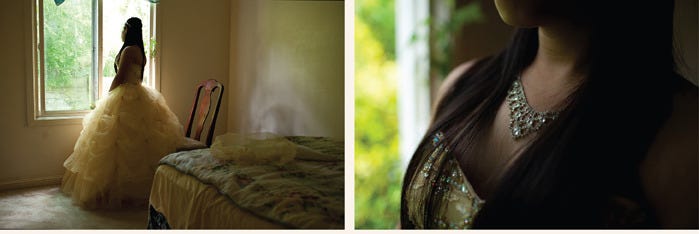
I grew up in Monterrey, Mexico, but it was only after moving to San Francisco three years ago, that my appreciation for Mexican culture — especially its warmth, friendliness, and family orientation — has grown. I’ve been spending a lot of time in the Mission speaking Spanish, getting to know the Latin residents, and observing the cultural similarities and differences with my hometown. I’ve been especially interested in the quinceañera –the traditional Latin American celebration that marks a girl’s passage into womanhood on her 15th birthday — since I didn’t have one myself. Before coming to San Francisco, I just didn’t understand the beauty and significance of the occasion.
The quinceañera reminds me of a mini wedding. There’s a fancy dress, hair and makeup get done, and lots of photos are taken. The celebrations start with a mass and lead to a reception that goes late into the night. One of the highlights of every quinceañera are the choreographed dances the girl of honor does with the chambelanes and damas, her closest friends, including a main chambelan who’s her date for the evening.
San Francisco, with its 121,774 residents of Mexican and Latin descent, plays host to about 500 quinceañeras a year. Most Latin American families in town know Mission Street as the one‐stop shop for quinceañera planning — the place for arranging the cake, flowers, photographer, invitations, catering, music, dress, and accessories.
I met three girls of Mexican and Latin American descent who celebrated their quinceañeras in San Francisco this year. I photographed them before their big day, and interviewed them before and after the event. All of the girls were born in the United States to parents who immigrated to the Bay Area. When I met them, it struck me how truly bicultural they are. The girls were more comfortable speaking to me in English than in Spanish, and didn’t like it when I told them to put their cellphones away so I could photograph them. But they were extremely proud, excited, and anxious to “become women” and to be perceived as such by their friends and family.

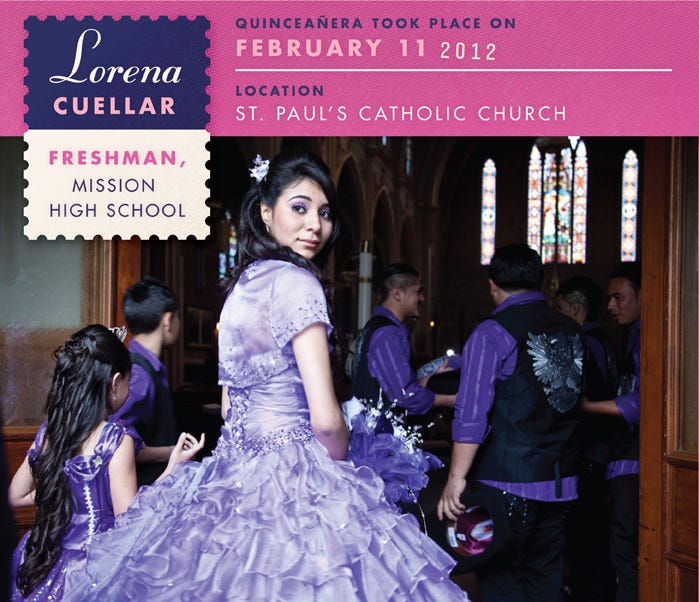
Lorena was born in San Francisco in the Mission district. Her parents immigrated to the U.S. 20 years ago from Guadalajara, Mexico. When I met Erica, Lorena’s mom, at their home on the day before her quince, I could feel how proud she was of her daughter. They had worked so hard on planning the event and now it was finally happening.

How are you feeling about having your quinceañera tomorrow?
I’m nervous. There will be a lot of people there from school. If I mess up the dances, people might make fun of me about it.
What does turning 15 mean to you?
It means I’m turning into a lady now. My dad gave me a doll with the same dress I’m wearing to my quince. It’s the last doll that he will give me because I’m not a girl anymore.
Who are your chambelanes and damas?
I have five chambelanes, who are my friends from school. The main one is a very special guy to me; I like him a lot.

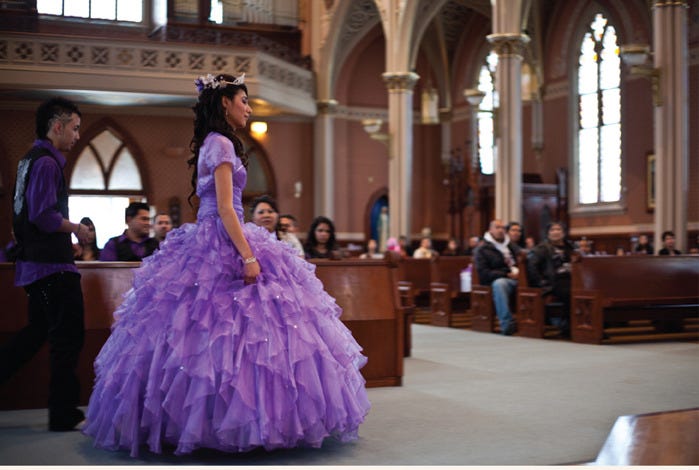

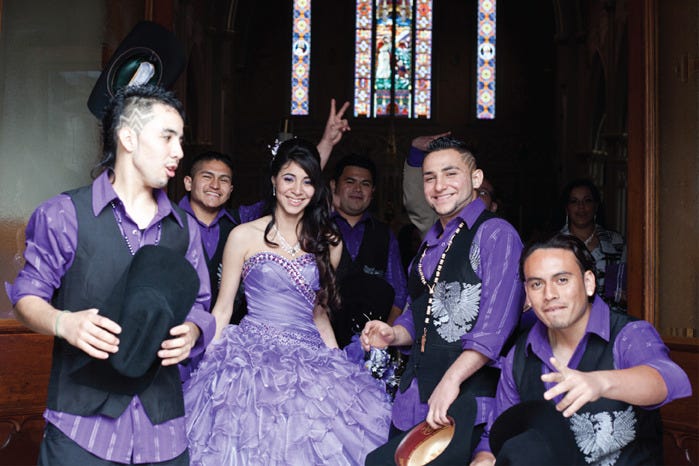


Karina was born in Daly City. Her mom is Nicaraguan and her dad is Mexican, but they met in San Francisco. I took these photos on a Sunday at Karina’s aunt’s place, where her whole family met for lunch. Her mom, Claudia, helped Karina into the dress — beautifully decorated with small purple flowers that had sparkling beads — while her cousins were in the other room playing video games. Karina looked like a princess.

What excites you the most about your quinceañera?
The dances. I’m going to have three surprise dances. I really like merengue, and we have choreographed and rehearsed with the chambelanes.
What was the hardest part about planning your quince?
It took a long time to plan. I started last summer. There is so much to do. My mom and I argued a lot. My mom wanted the dress to be pink, which I didn’t like. We went to four different stores, and the last store I finally found this purple one. We knew this one was it.
How has your life changed after your quinceañera?
I think my mom looks at me and sees a more mature woman. I have started to be serious about my goals in the future. I want to study hard and get good grades so that I can make my parents proud and be a good daughter.

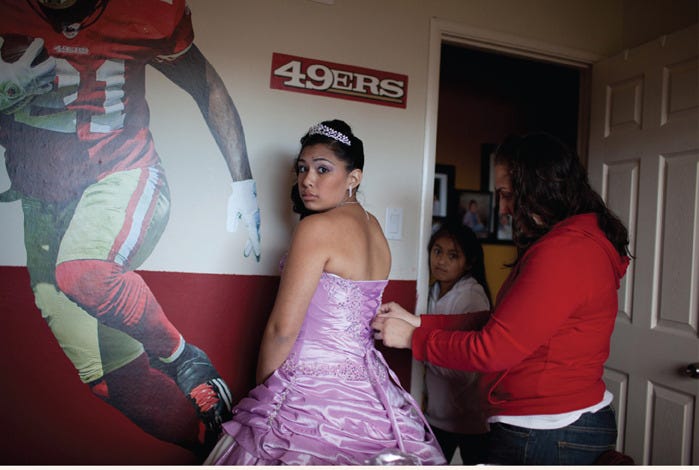

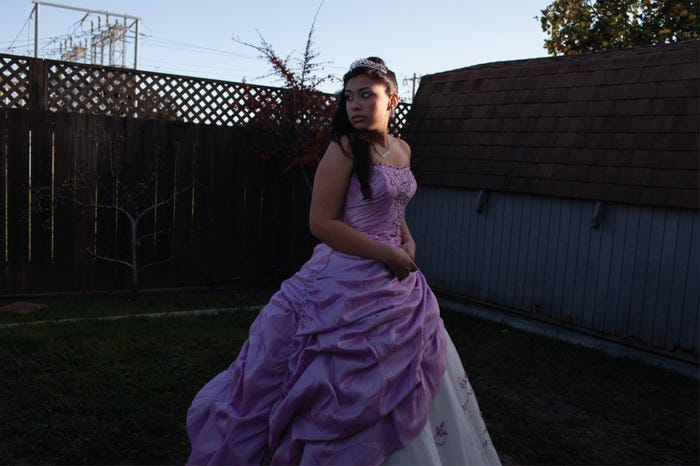

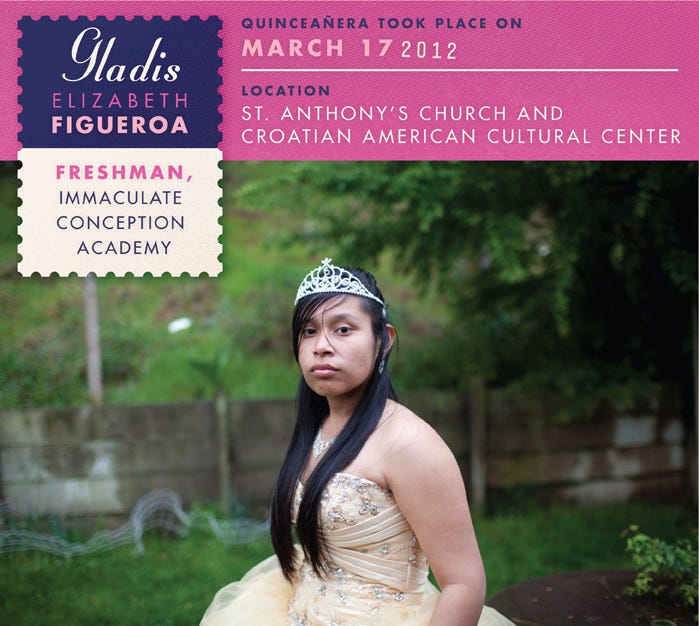
Gladis was born at San Francisco General Hospital in Potrero Hill. Her parents, from El Salvador and Guatemala, met in San Francisco 18 years ago. When I first met Gladis she seemed very reserved and quiet, but as I started photographing her I noticed this incredible presence that she evokes. Her body language expressed a sense of security and maturity. It seemed like she was not afraid of anything.

What does turning 15 mean to you?
It means I am finally becoming a woman in my mom’s eyes, and I am getting more respect from her. It means I’ll get to see my dad, who doesn’t live with us; he lives in Richmond. I’m excited and nervous to turn 15 and supposedly be considered a woman.
Why do you say “supposedly”?
In El Salvador and Mexico you are considered a woman. Here in America you are still a teenager.
How did you pick your dress?
My aunt saw it as we were passing by a store and I loved it. It was the first and only one I tried and I fell in love with it.
How has your life changed after your quinceañera?
It made me realize how much my mom sacrifices for me. She spent a lot of time and money on the quince. I appreciate her even more.


